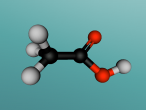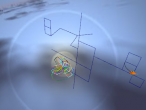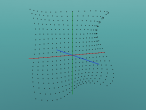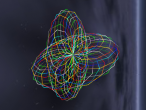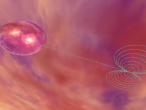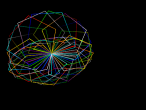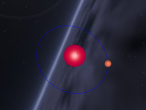Magnesium Atom

It is stated constantly that the various atoms making up the elements " are the building blocks of life", together forming almost all matter. Magnesium (Mg) is the ninth most common element on the periodic table and the eleventh most common element in the human body, by mass. In total, it is fairly abundant in the universe. It is an alkaline earth metal with an atomic number of 12 and atomic mass of 24.305. The structure of magnesium was modeled and constructed on VRmath, a 3D modeling software. This blog will cover the structure, composition and characteristics of magnesium, as constructed on VRmath, as well as any additional interesting facts.
Magnesium is a silvery-white/grey alkaline earth metal. It is protected by a thin layer of oxide, preventing oxygen in the air to result in corrosion. It has a density of 1.74 g/ cm3, meaning it is denser than and sinks in water, although still quite light. Magnesium is a solid at room temperature (20ºC), melting at 650ºC and boiling at 1090ºC. Magnesium's structure and composition result in these properties.
Subatomic particles in atoms makeup their structure and composition. Atoms contain three types of subatomic particles. Of these, protons are positively charged particles, while electrons are negatively charged particles, and neutrons have no charge. Magnesium has an atomic number of 12 and an atomic mass of 24.305. This means it contains 12 protons, 12 neutrons and 12 electrons. It is stable at 24 amu as the same number of protons and neutrons are found in the nucleus, meaning the strong force can hold these two subatomic particles together, forming a stable element. It contains three electron shells, of which the first contains two electrons, the next containing eight electrons, and the final containing two electrons. This can be observed from the 3D model on VRmath, as the model possesses 12 red subatomic particles (protons) and 12 white subatomic particles (neutrons) inside the nucleus, with a total of 12 small white spheres (electrons) orbiting the nucleus from their respective shells. Subatomic particles determine an element's structure and composition, as shown in the 3D model.
These subatomic particles, mainly electrons, determine additional properties of elements. Factors relating to electrons such as electron configuration, shells and orbitals determine a large quantity of the element's properties. Firstly, each atom has a set number of electron shells to house electrons. The first electron shell can house a maximum of two electrons, while the second can house eight and the third can house 18, while the general formula for the maximum number of electrons to be housed in a shell is 2n2, n being the shell number. Magnesium contains two electrons in the first shell, eight in the next shell, and two in its third and final shell. Secondly, electron configuration and orbitals are other key factors. Elements down the first column of the periodic table are part of group 1 and contain one valence electron, while elements down the last column of the periodic table are part of group 18 and contain eight valence electrons. Therefore, group 18 elements are highly stable and rarely react with other elements, while group 1 elements are unstable as single atoms, but may become stable by losing or sharing their valence electrons with another atom, bonding and forming a molecule. As magnesium is in the second row, it is a group 2 element and may be unstable if without 24 amu, becoming stable by sharing valence electrons with other atoms, when it is bound as a molecule or by releasing protons and neutrons as an atom. In addition, orbitals are amounts of space around the nucleus, which electrons are likely to be, orbiting the nucleus in varying shapes. Each electron shell can be divided into at least one sub-shell, known as either s, p, d or f, s holding 2, p holding 6 and d holding 10 electrons. The first orbital in magnesium is 1s, holding its maximum of 2 of magnesium's electrons (1s2). Next, 2s holds a maximum of 2 (2s2), 2p holds a maximum of 6 (2p6), and 3s holds its maximum of two (3s2), meaning that the electron configuration of the 12 electrons in magnesium is written as 1s2 2s2 2p6 3s2. Electron configuration, orbitals and shells contribute to some basic properties of elements.
Magnesium also has many essential uses, although it may not be apparent. It is interesting that Magnesium has many roles, it is both essential biologically when occurring naturally, and technologically when used by humans. Biologically, chlorophyll contains an atom of magnesium, allowing plants to absorb sunlight and carry out photosynthesis. In addition, it enables hundreds of enzymes to remain functioning and is used to treat disorders or diseases in humans. Technologically, laptops, tools and cameras are lighter when produced with magnesium. Secondly, it improves the wielding characteristics of aluminum when used as an alloying agent as it is a third less dense than aluminum. This means it can be used in vehicle and aircraft production. Finally, its flammability in air results in it being a part of fireworks and flares.
These interesting pieces of information listed above can be further investigated from
http://www.rsc.org/periodic-table/element/12/magnesium
https://ods.od.nih.gov/factsheets/Magnesium-HealthProfessional/
http://www.aafp.org/afp/2009/0715/p157.html
Overall, the construction of the 3D model went successfully, although there were some difficult aspects of programming encountered when creating the model. An initial difficulty was understanding the various commands on the editor such as spinning an object or setting the parent object. However, this could be grasped with more practice. In addition, a significant difficulty was visualising the location of the "turtle" which changed after each command and was not always visible due to being covered by the 3D model. This meant that sometimes commands were unsuccessful and had to be attempted again until the "turtle" was finally transported to the intended location. Finally, it took several attempts of trial and error, as well as visualisation to assemble each and every subatomic particle in its intended location due to using an incorrect command or inaccurate visualisation when mathematically determining the location desired. Despite this, the assembly of the 3D model was successful overall.
The 3D model is illustrated above on this blog. The code associated with this is as follows:
- hbasn1's blog
- Login or register to post comments
- 5359 reads

